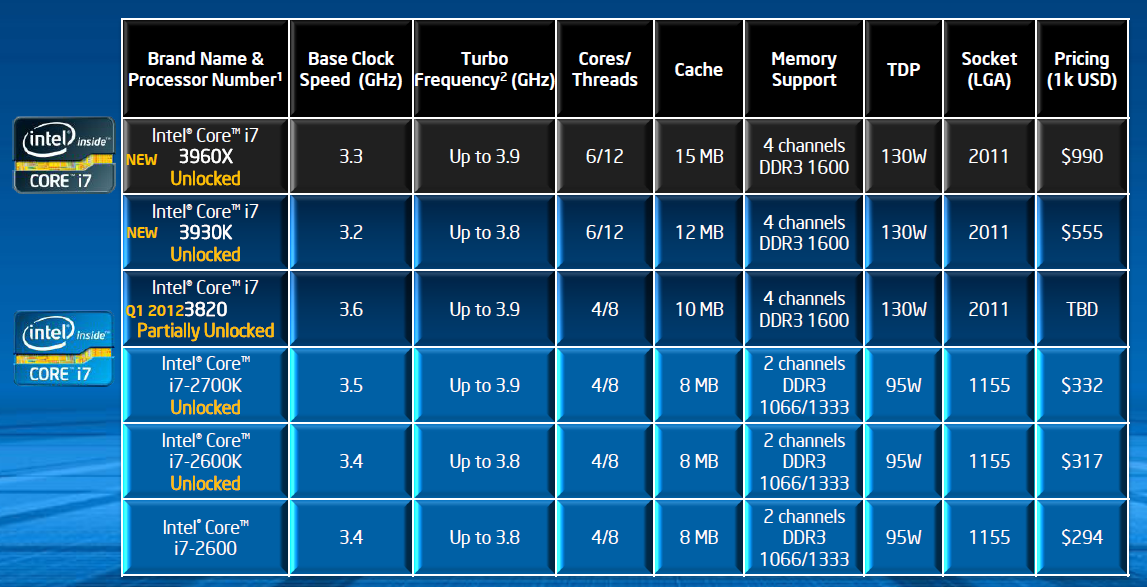New second-generation Intel Core 3xxx CPU
The nomenclature of the new CPUs partly follows the approach taken with Sandy Bridge. This new series of CPUs, even if still belonging to the second generation will have a nomenclature which still provides the acronym Core i7 to distinguish the CPU belonging to the enthusiast series (in this case all), and the suffix X and K to indicate respectively the Extreme Edition CPU and the CPU with unlocked multiplier. The numbering currently provides 39xx numbers for hexa-core CPU and 38xx for quad-core CPU.
Intel has announced three new LGA 2011 CPU for the platform, two hexa-core processor, available from today. This is the Core i7 3960X analyzed in this review and the Core i7 3930K, both with unlocked multiplier, 6 physical cores and 12 logical and respectively 15 and 12 MB L3 cache. The CPU 3820, quad-core with HT, and 10 MB cache will be available next quarter. All CPUs will have a TDP of 130W, a quad-channel DDR3 memory controller with official support for 1600 MHz frequency. Obviously you can easily increase this frequency by multiplier, as already seen for LGA 1155 platforms. In this case, however, the CPU easily support memory frequencies of up to 2400 MHz, allowing for memory bandwidth previously unimaginable.
As for prices, as was expected, the processor is placed top of the range around $ 1000, while the Core i7 3930K is positioned at a price of $ 550, very similar to that of the Core i7 980, which is to replace. The price of the Core i7 3820 has not yet been defined.
The starting frequencies of these CPUs are positioned just below 2600K and 2500K but this time 2.0 Turbo Boost technology allows increases in frequency up to 600MHz (with only two cores active) due to the increased TDP margin. With all of the cores in active state, Turbo Boost can increase the frequency up to 300MHz.
Obviously worth all the considerations already made for LGA 1155 Sandy Bridge CPU, not only on the operation of the Turbo Boost, but also in respect of all architectural improvements introduced in the second generation of Intel Core. Please refer to the article for a fast refresh of some concepts which we will resume without going into detail in the next pages: http://www.xtremehardware.com/recensioni/processori/intel-core-i5-2500k-e-i7-2600k-su-piattaforme-lga-1155-e-chipset-p67-analisi-e-prestazioni-delle-cpu-sandy-bridge-201101094621/2/


